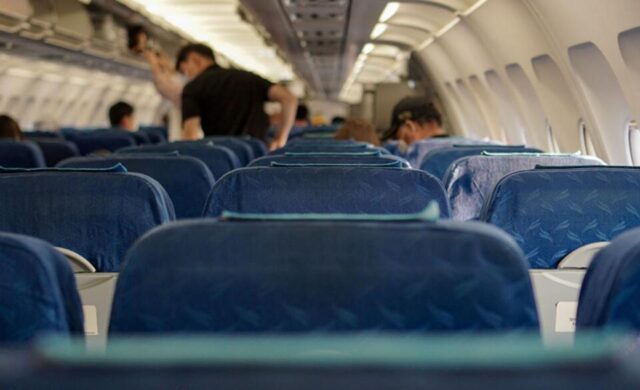But there are the drawbacks of requiring parents to purchase airplane tickets for their youngsters.
By Andrea Sachs
WHEN the seat belt light blinks on, every passenger buckles up except for one group of flyers: lap-babies.
Unrestrained children sharing a seat with their parents are exempt from the safety mandate, presenting a growing concern amid recent incidents of severe turbulence.
“We’ve seen airplanes go through turbulence recently and drop 4,000 feet in a split second,” said Sara Nelson, the international president of the Association of Flight Attendants-CWA (AFA-CWA).
“The G-forces are not something even the most loving mother or father can guard against and hold their child. It’s just physically impossible.”
The union is pressing for a rule change that would require all passengers, regardless of age, to occupy an airplane seat with a restraint. Currently, children under 2 years old, can fly free on their parents’ laps.
The AFA-CWA raised the issue on Wednesday, at the Federal Aviation Administration safety summit in Northern Virginia and has submitted its list of priorities, including “a seat for every soul”, to Congress.
Legislators are in the process of crafting a FAA reauthorisation bill, which expires in September. The union submitted the same recommendation during the last round of reauthorisation in 2018.
The tragedy that haunts Nelson occurred in 1989, when United Airlines Flight 232 crash-landed in Sioux City, Iowa.
Following protocol, the flight attendants instructed the parents to wrap their unbuckled babies in blankets and place them on the floor. Three of the infants suffered injuries, and one died.
“Sadly, this has been more than a 30-year priority for our union,” Nelson said.
“We must have children safe on the plane and in their own seats with a proper restraint device to make sure it never happens again.”
In 1994, the debate re-emerged when a little girl sitting on her mother’s lap died in a USAir crash in Charlotte.
“The safest possible thing is for everybody to be restrained,” said Ben Hoffman, president-elect of the American Academy of Pediatrics.
On many foreign carriers, parents can (loosely) secure their child with a belly loop belt that wraps around the baby’s torso and attaches to the adult’s seat belt.
The International Air Transport Association’s Best Practices Guide recommends that parents tuck their children into a restraining device approved by the country’s safety regulator and the airline.
But the association concedes: “If the responsible person does not provide an approved infant restraint system, or if the CRS is not accepted in accordance with the airline’s policy or State regulations, the infant should be held by a responsible person.”
Hoffman recognises the drawbacks of requiring parents to purchase airplane tickets for their youngsters.
The main concern is that families will not be able to afford the airfare and will resort to driving, a more perilous mode of transportation.
“If they travel by car instead, they will actually be putting themselves at a significantly greater risk, because car crashes are so much more common than airplane incidents, whether it’s a crash or turbulence,” Hoffman said.
To emphasise his point, he cited a 2003 study published in the “Journal of the American Medical Association Pediatrics” that assessed the risks to children if families switched from air to car travel.
The researchers determined that if as few as 5% to 10% of travellers hit the road instead of flying, the number of infant deaths caused by car accidents would likely exceed the number of fatalities averted by requiring child restraints on planes.
“Unless space for young children in restraint seats can be provided at low cost to families, with little or no diversion to automobile travel, a policy requiring restraint seat use could cause a net increase in deaths,” the researchers said.
Hoffman said the best solution is for airlines to discount tickets for young travellers.
“That would be great if the airline provided some mechanism to support the parents and not charge a full fare. But the current system is cost prohibitive for many families,” Hoffman said.








